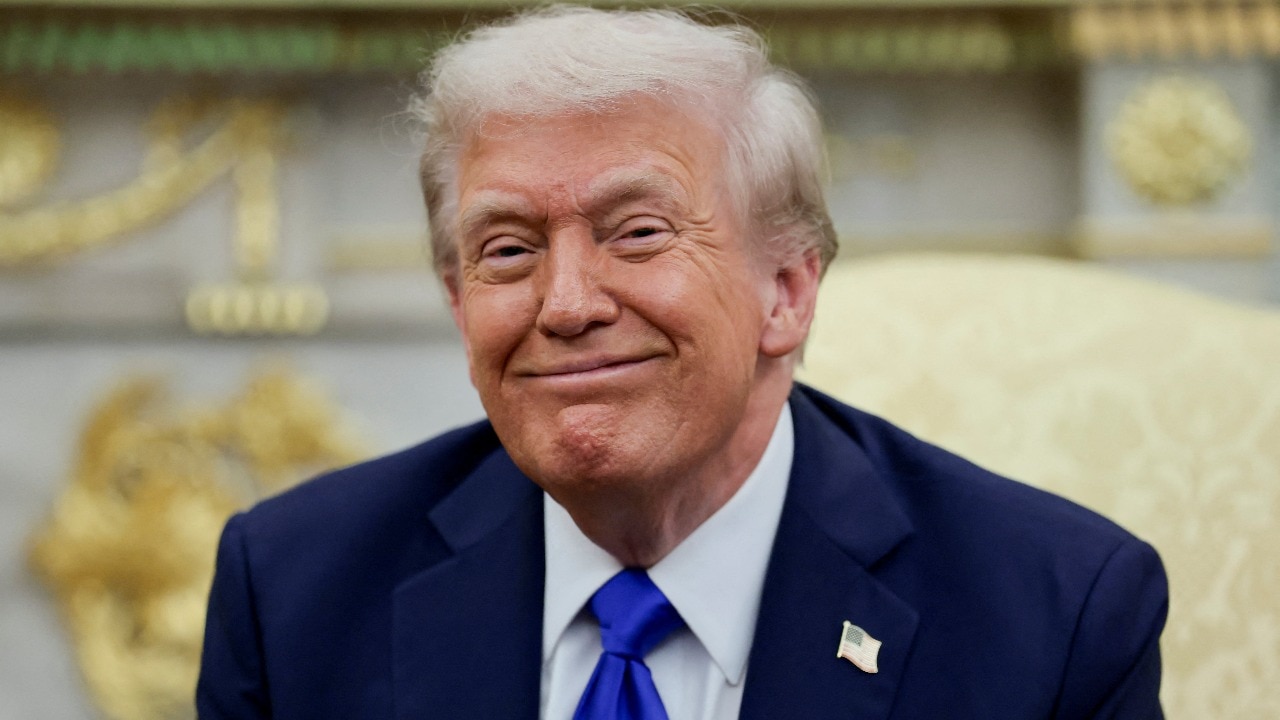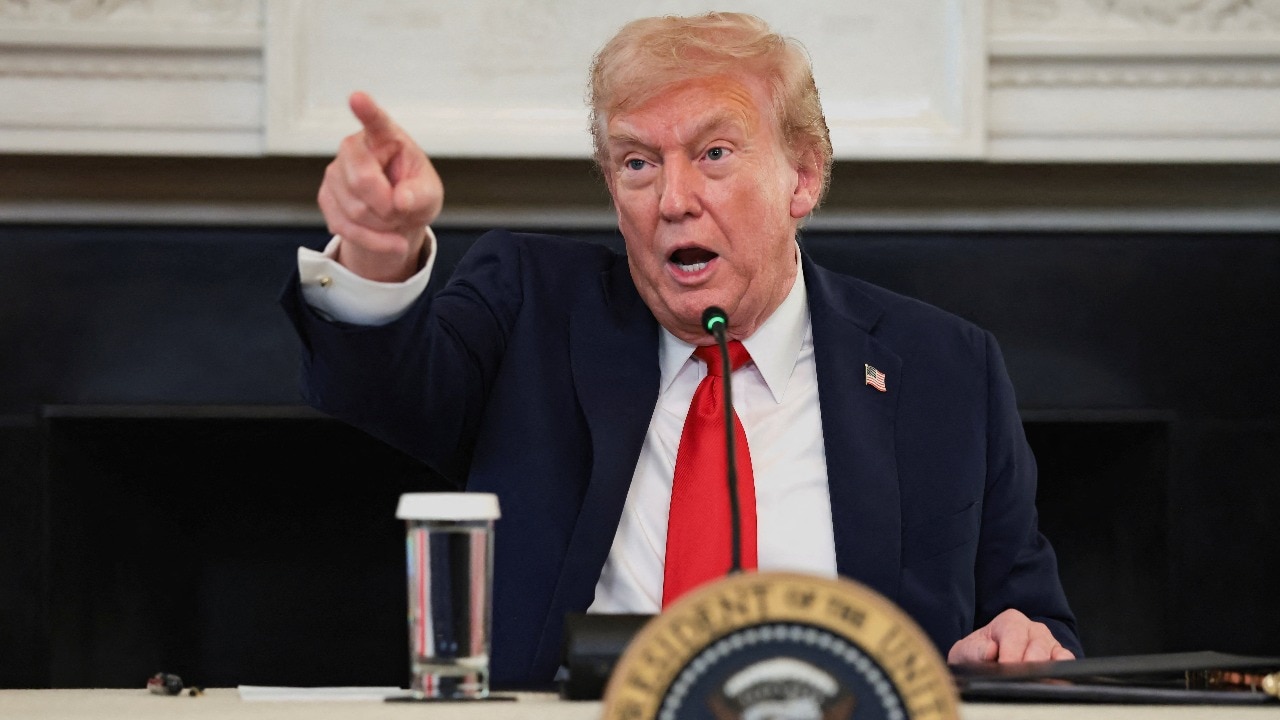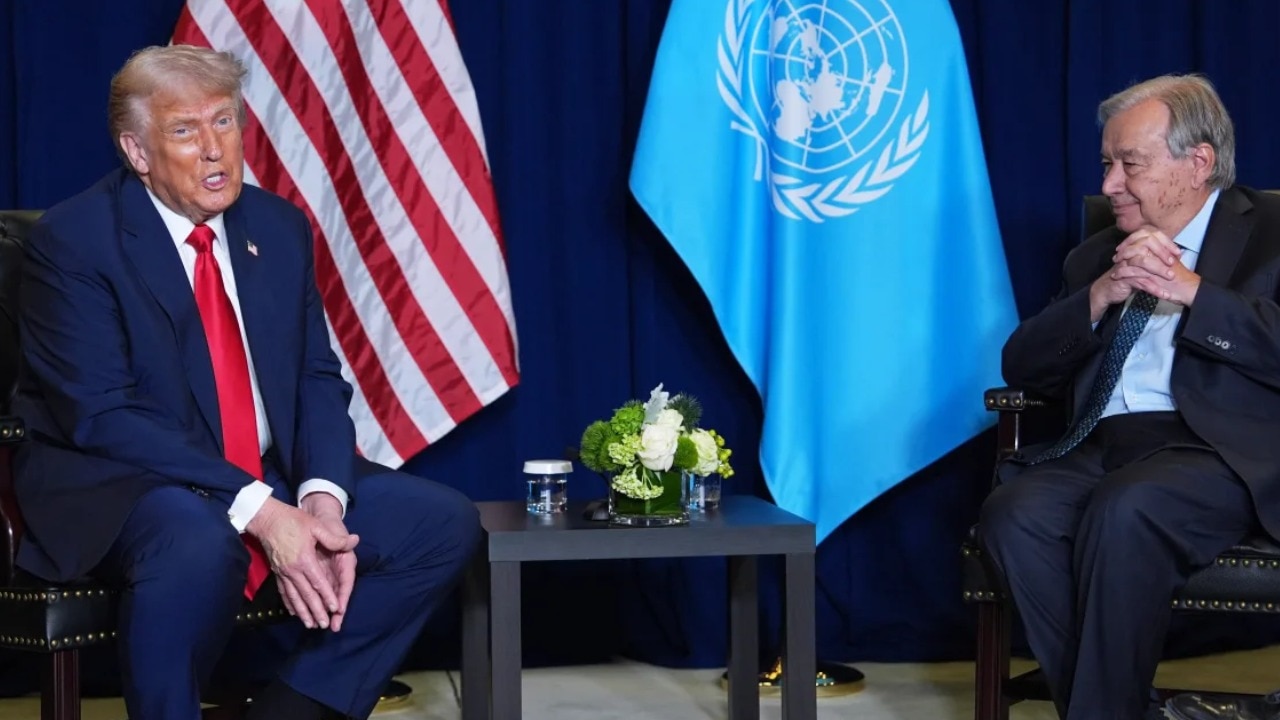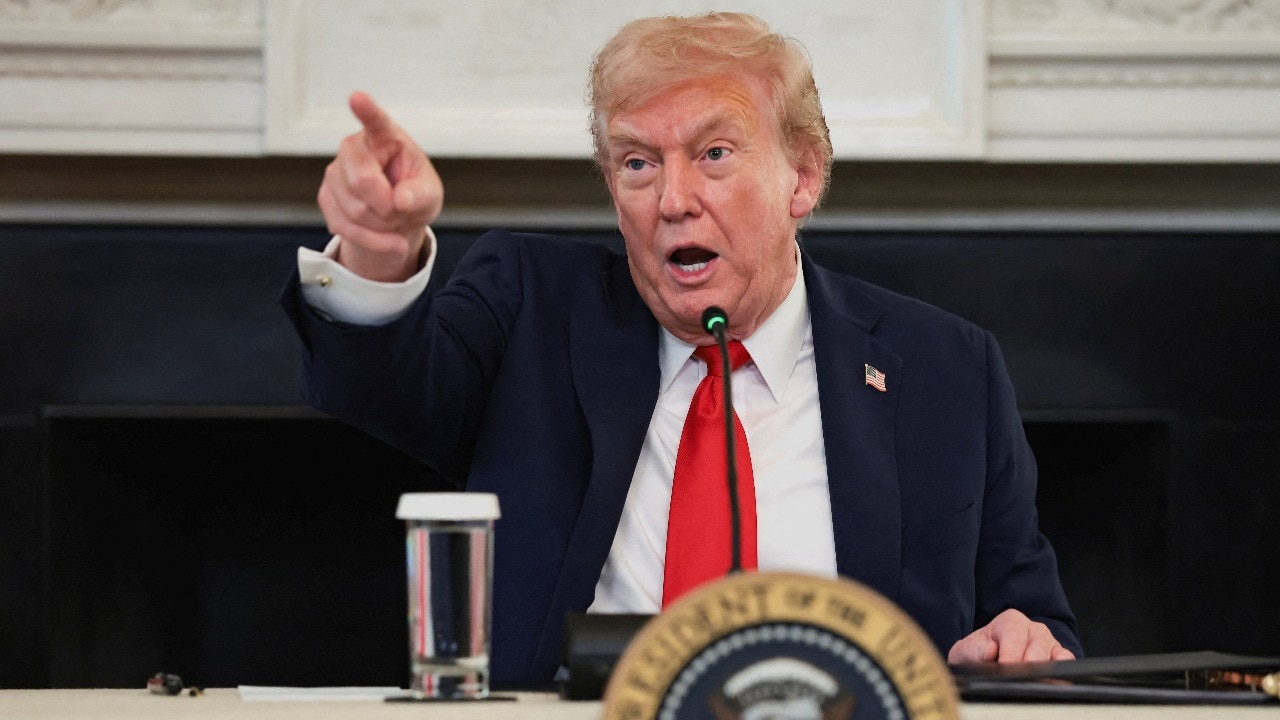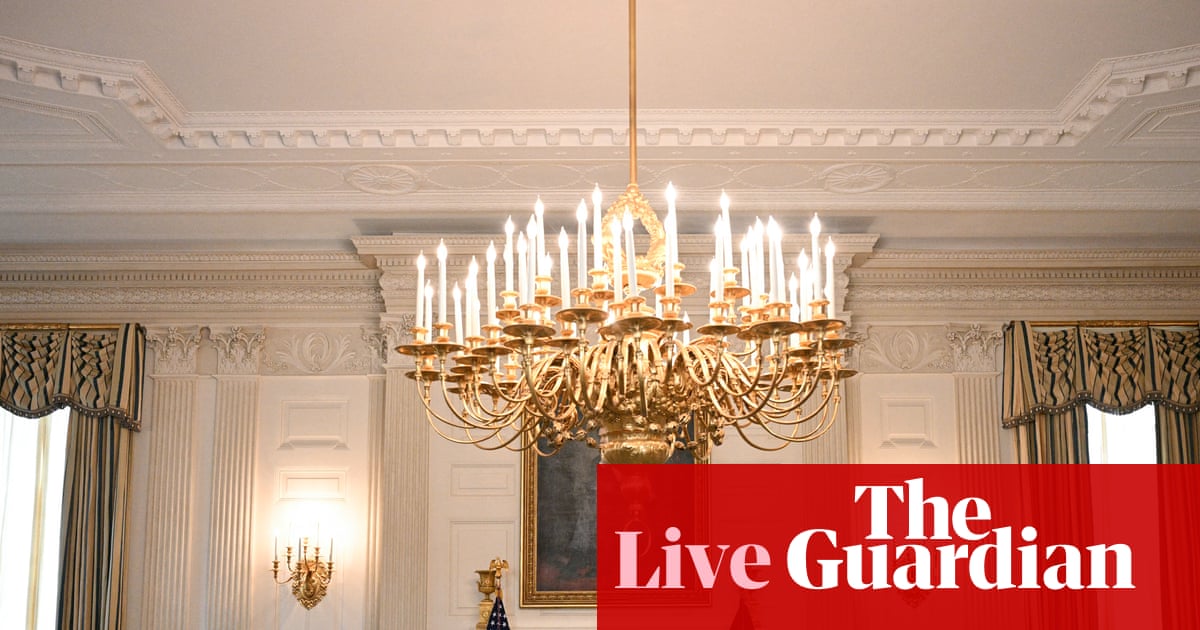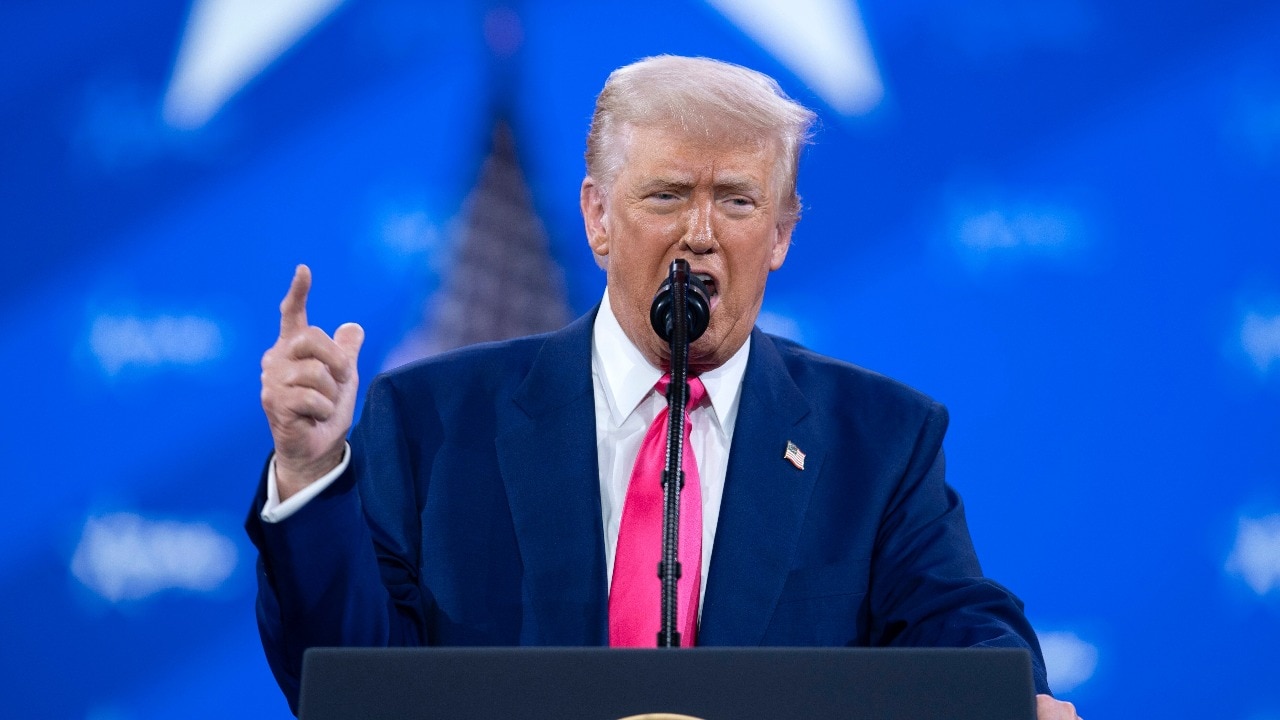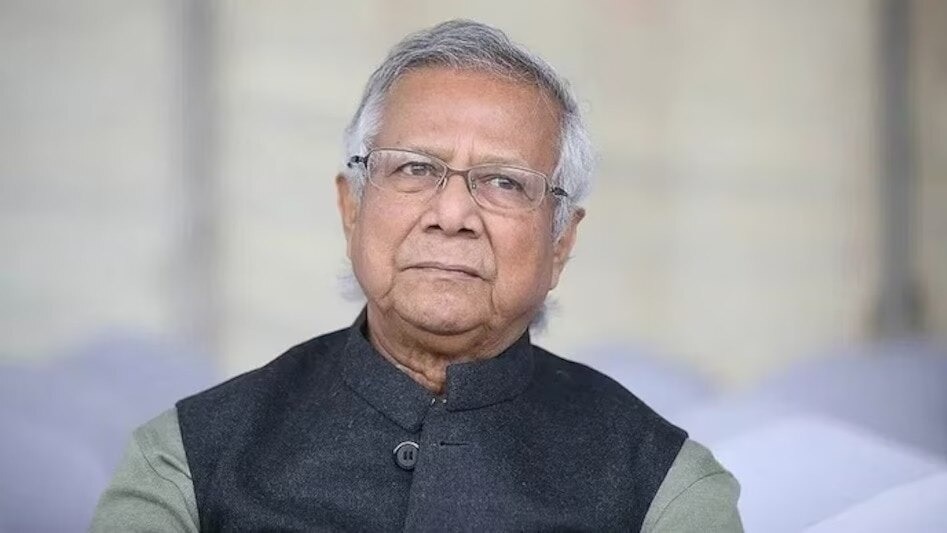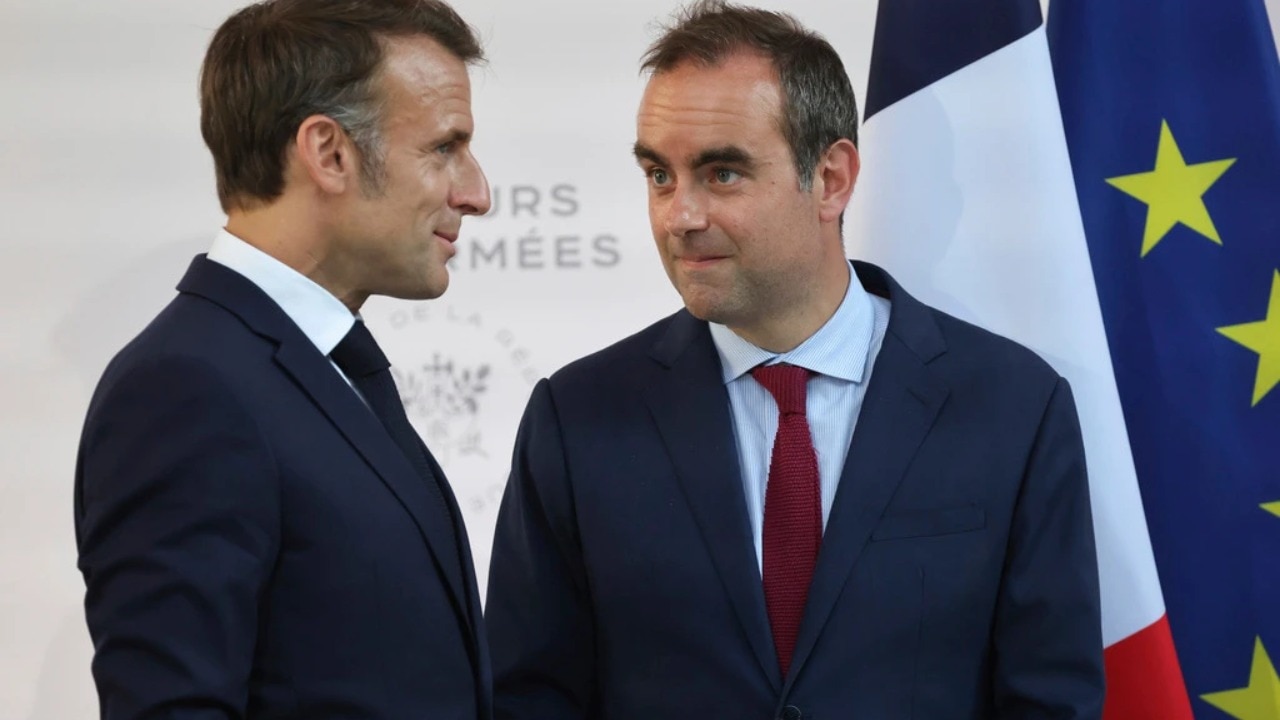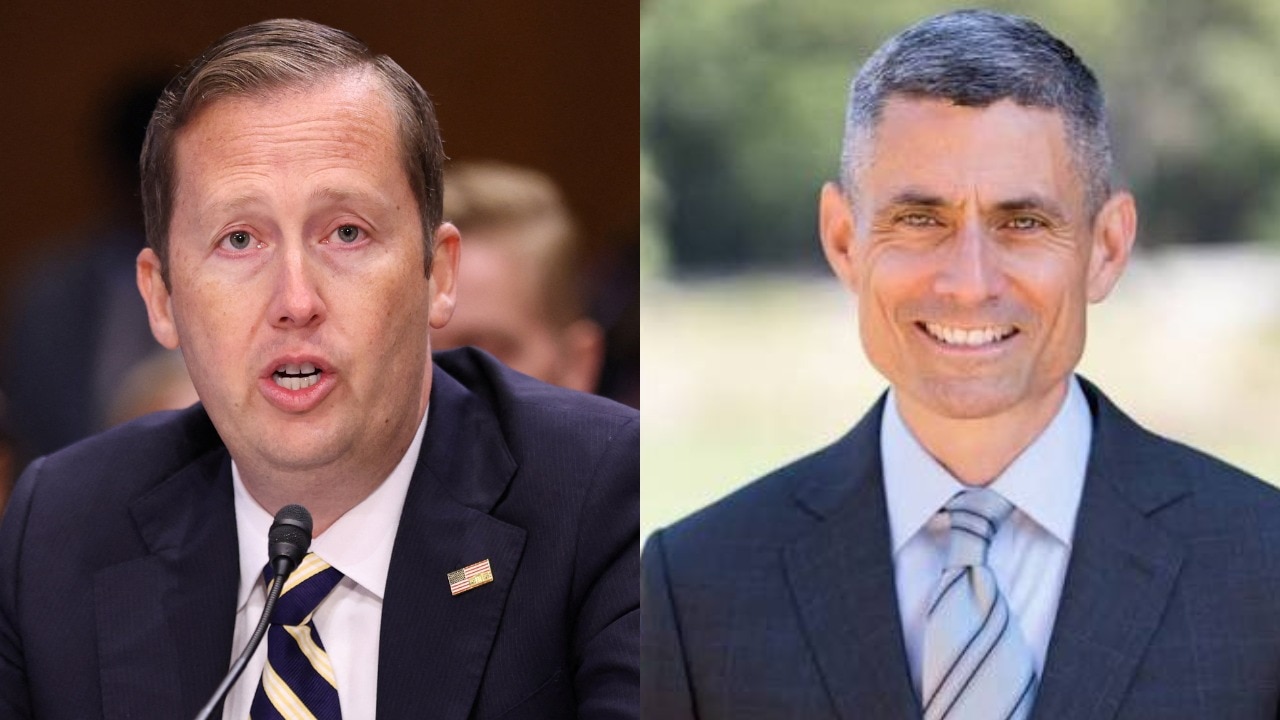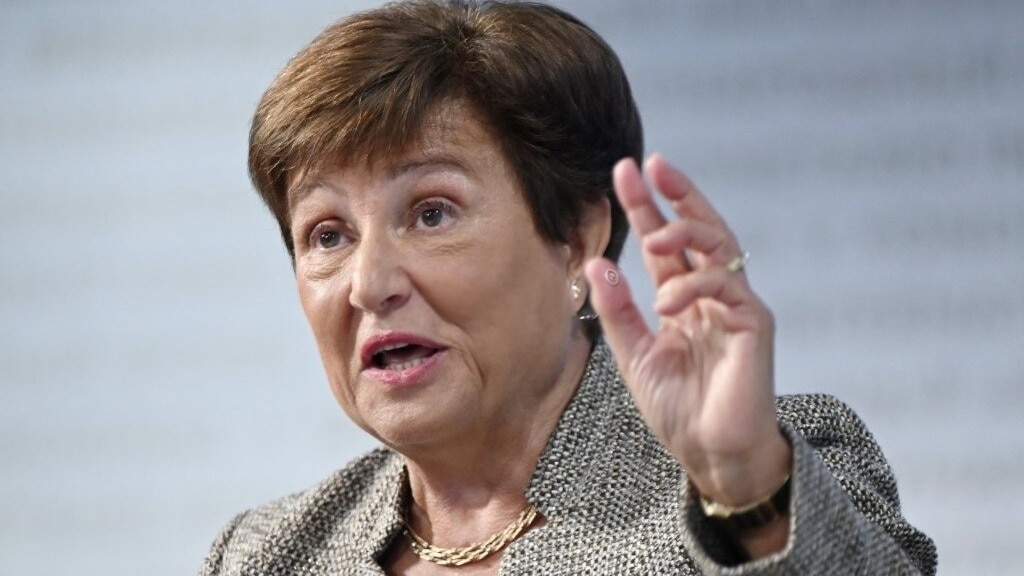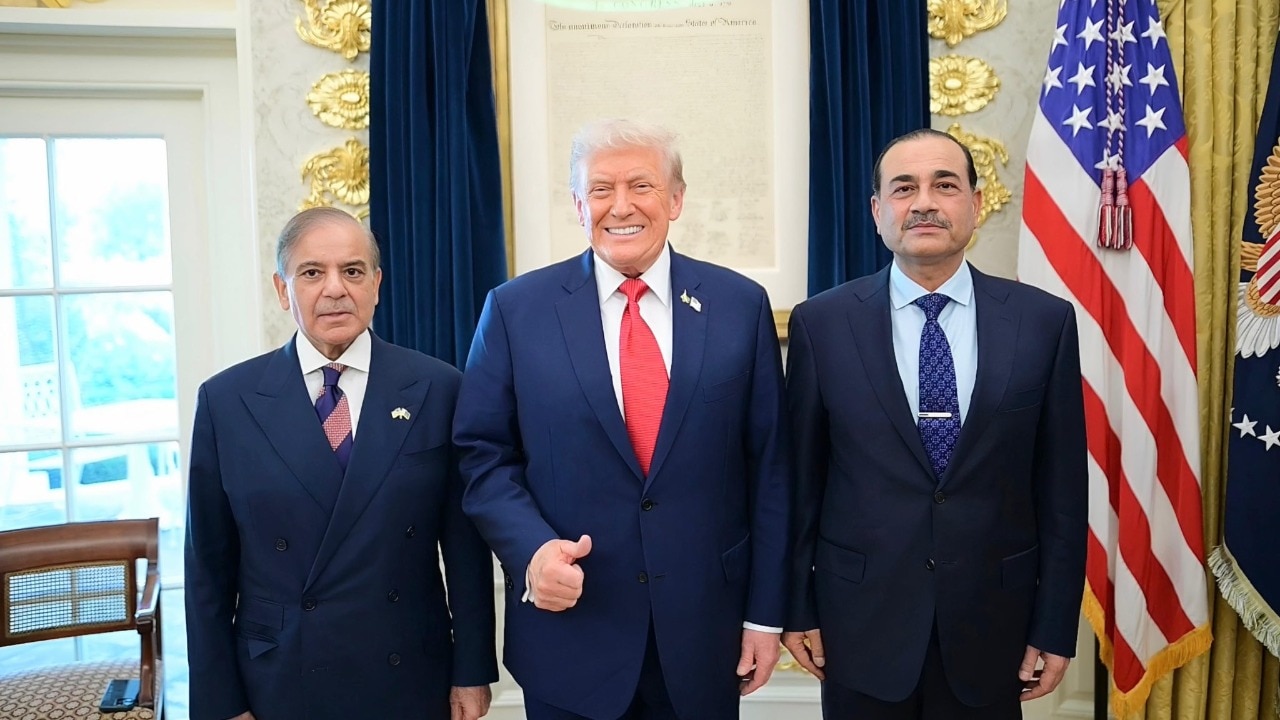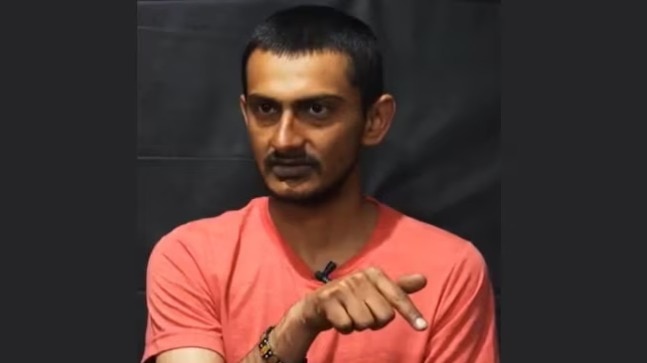Last Updated:August 12, 2025, 14:00 IST
A territory swap deal is on the table at the Trump–Putin Alaska summit, but in towns like Sloviansk, residents fear it would mean losing their homes again

Trump has previously said both Russia and Ukraine would need to cede territory to end the fighting. (File pic/Reuters )
The announcement of a Donald Trump-Vladimir Putin summit in Alaska on August 15 has brought a contentious idea to the fore: a potential “territory swap" in Ukraine in exchange for a ceasefire. The proposal, as reported by CNN after US special envoy Steve Witkoff’s recent Moscow visit, would see Kyiv cede remaining parts of Donetsk still under its control to Russia in return for halting the fighting and freezing the current frontlines elsewhere.
Donetsk and neighbouring Luhansk lie in eastern Ukraine along the Russian border. Together they form the Donbas region, a flashpoint since 2014 when Moscow-backed separatists seized parts of both provinces. Those areas remained under rebel control until Russia’s full-scale invasion in 2022, after which Moscow declared the “liberation" of additional cities and claimed the entire region as annexed.
While the United States hopes the meeting could pave the way for an end to the war, the notion of trading land for peace has already been rejected outright by Ukraine and has triggered deep unease in towns that would be directly affected.
What Is The Territory Swap Idea?
According to CNN, the Kremlin’s pitch to Witkoff included an offer to exchange a ceasefire for territory in Donbas that Russia has not yet conquered. For Moscow, the aim is to consolidate its hold on Donetsk and Luhansk, completing its long-sought control over the industrial heartland — a region rich in coal, heavy industry and infrastructure that has been at the centre of conflict since 2014.
Trump has previously said both sides would need to cede territory to end the fighting, remarks that reinforced Kyiv’s fears the US could seek to impose a deal over Ukrainian objections. The scenario most frequently discussed would see Ukraine withdraw from the remaining areas of Donetsk it controls, with Russia halting its offensives in Zaporizhzhia and Kherson and accepting a frozen line of contact.
For Kyiv, this would mean surrendering towns it has fought to hold and that residents have struggled to rebuild, while legitimising Russian gains from an invasion that began in 2022. For Moscow, it would formalise battlefield progress and allow it to declare victory in the Donbas.
The View From Sloviansk
On the ground, the reaction is one of disbelief, defiance and anxiety. CNN reported from Sloviansk, a city first seized by Moscow-backed separatists in 2014 and retaken by Ukraine later that year, that residents are living with regular shelling and the proximity of the eastern front.
On the beaches of the town’s tiny salt lake, where locals seek relief in medicinal waters under the shadow of a concrete bomb shelter, talk of a land deal feels surreal.
Local journalist Mykhailo told CNN he calls the place “the Salt Lake City of Sloviansk" and said the rumours have caused “panic" among friends who fear they will be forced to leave again. “Many of my friends want to stay here… but frankly speaking I don’t think it is going to happen," he said.
The idea that their key ally, the United States, could contemplate handing their town to Moscow is particularly jarring. New trenches have been dug west of Sloviansk in case Russia’s offensive pushes closer, but few imagined that the risk could come from a political bargain rather than a battlefield defeat.
The Battlefield Reality
Any talk of redrawing the map in Alaska has to contend with the reality that the frontlines are still shifting, and in places, moving in Russia’s favour. The Donetsk region, central to Moscow’s demands, is seeing some of the fiercest fighting of the summer. Russian forces are pushing westwards, with artillery and drone strikes expanding the so-called “danger zone" far behind the immediate front.
Control over key hubs like Pokrovsk and Kostiantynivka, both major logistics and transport nodes, is vital; losing them would complicate Ukraine’s ability to supply and reinforce troops defending the rest of Donetsk.
Sloviansk, one of the largest cities in the Ukrainian-held part of Donetsk, is close enough to hear shelling daily. Just 20 kilometres away, the nearest train station in Kramatorsk bustles with soldiers heading to and from the front, and civilians trying to evacuate or return home. Air raid sirens greet trains arriving from Kyiv, underscoring that even Ukraine’s rear areas remain under threat.
For many residents, the strategic maps debated in distant capitals feel irrelevant compared to the immediate risk to loved ones. A woman named Tetyana told CNN she had travelled to see her husband, a tank unit soldier, for just two days to mark his birthday. “I just want my husband to be alive and come home," she said. The prospect of a political deal trading away nearby territory doesn’t factor into her calculations, survival does.
Trump’s Position And Leverage
From the start of his presidency, Trump has called for a 30-day unconditional ceasefire as the prelude to peace talks. Ukraine accepted this in March; Russia did not. Since then, Moscow has escalated, with attacks described as having doubled since Trump entered office, according to CNN.
In recent weeks, Trump has sought to increase pressure on Putin. He unveiled a policy linking failure to accept a ceasefire to escalating sanctions not just on Russia but on buyers of Russian energy — a move that has already led to increased tariffs on India. He has also reaffirmed continued US military support to Ukraine via NATO allies and highlighted allied commitments to increase defence spending.
These moves, coupled with Russia’s heavy military losses, form the basis of the White House’s argument that Trump arrives in Alaska from a position of strength.
The Reagan Parallel
In October 1986, US President Ronald Reagan met Soviet leader Mikhail Gorbachev in Reykjavik, Iceland, to explore ways to ease Cold War tensions and cut nuclear arsenals. The talks came close to producing a breakthrough, but collapsed when Gorbachev demanded the US abandon its nascent missile defence programme, something the Soviets saw as a threat to their deterrent. Reagan refused, and both leaders walked away without an agreement. At the time, it was widely labelled a failure.
Yet that refusal to compromise on a core principle is now seen as pivotal. Within a year, Washington and Moscow signed the first treaty eliminating an entire class of nuclear weapons. By 1991, the two powers had agreed to sweeping arms reductions, all while the US continued developing missile defence. Reykjavik is remembered as a moment when walking away set the stage for a better deal later.
For Alaska, the comparison lies in the negotiating stance. The logic is that Trump should insist on his declared condition — a full, unconditional 30-day ceasefire — before entertaining any maps, prisoner swaps or political concessions. Agreeing to a territory swap without first silencing the guns could entrench Russia’s battlefield gains, legitimise its claim to the rest of Donetsk, and allow it to rearm for future offensives.
As in 1986, leaving without a deal might look like failure in the moment but could strengthen the chances of a more durable peace later.
Why Ukraine’s Absence At The Table Raises Concerns
The Alaska summit is being held without Ukraine’s participation, a fact that adds another layer of controversy to any talk of territory swaps. The risk is that a meeting between Trump and Putin, complete with maps in hand, could produce the image Moscow covets — the US and Russia sketching out future borders of a European country that Russia invaded, all without that country’s consent.
Kyiv has repeatedly stated it will not accept any settlement that cedes territory, and being excluded from talks raises fears that decisions about Ukraine’s future could be made without its involvement.
The sequence that avoids this risk is straightforward: secure a ceasefire first, bring Ukraine in as a full participant for political negotiations second, and only then move to detailed discussions on borders or territorial arrangements.
Could A Ceasefire Work?
Trump’s proposal for a 30-day unconditional ceasefire is meant to be a quick test of Moscow’s intent. Supporters of the idea point to immediate gains: stopping artillery and missile attacks could save lives in towns like Sloviansk, Pokrovsk and Kostiantynivka, which are under near-daily fire; humanitarian corridors could be opened to evacuate civilians and deliver medical supplies; and damaged infrastructure could be repaired without the risk of shelling.
A workable ceasefire would require detailed terms: halting offensive ground movements, banning strikes beyond the current line of contact, and guaranteeing aid agency access.
The risks, however, are not theoretical. In 2014–15, the Minsk ceasefires broke down as Russia-backed forces used the lull to rotate troops, move equipment and prepare new offensives, a history that explains Kyiv’s scepticism toward any short-term pause without a binding political framework.
Military analysts caution that if Russia retains the initiative in parts of Donetsk, a short pause could lock in its latest territorial gains and weaken Ukraine’s position in later talks.
Critics also warn that without a clear political framework agreed in advance, a 30-day pause could simply freeze the war in place. On the other hand, advocates argue that the humanitarian benefit of halting strikes, even temporarily, outweighs the risks — especially for civilians in frontline towns who face immediate danger.
Whether it works will hinge on sequencing: if a ceasefire is followed quickly by negotiations with Ukraine at the table and backed by strong enforcement, it could lay the groundwork for a broader settlement. If it is simply a pause without political progress, it risks becoming just another chapter in a grinding war.
The Bottom Line
The proposed territory swap is not a neutral bargaining chip. It represents the possibility of formalising Russia’s gains in Donbas, forcing tens of thousands from their homes, and undermining the principle that borders cannot be changed by force. On the ground, it injects fresh uncertainty into communities already living on the edge of conflict.
In Alaska, the outcome will likely be binary: either Putin agrees to a full ceasefire as a starting point, or the summit risks ending with the war continuing and the frontline unchanged, except for the psychological blow to those wondering if their homes will be traded away.

Karishma Jain, Chief Sub Editor at News18.com, writes and edits opinion pieces on a variety of subjects, including Indian politics and policy, culture and the arts, technology and social change. Follow her @kar...Read More
Karishma Jain, Chief Sub Editor at News18.com, writes and edits opinion pieces on a variety of subjects, including Indian politics and policy, culture and the arts, technology and social change. Follow her @kar...
Read More
August 12, 2025, 13:41 IST
News explainers Trump's Ukraine 'Territory Swap': What The Deal Could Look Like On Map Vs Reality On Ground
Disclaimer: Comments reflect users’ views, not News18’s. Please keep discussions respectful and constructive. Abusive, defamatory, or illegal comments will be removed. News18 may disable any comment at its discretion. By posting, you agree to our Terms of Use and Privacy Policy.
Read More

 1 month ago
1 month ago



